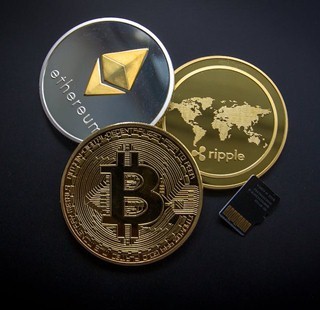Nowadays it is inevitable to talk or hear information about cryptocurrencies, Web 3.0 and how the eCommerce increasingly contemplates receiving cryptocurrencies such as Bitcoin or Ethereum as means of payment.
Web 3.0 or Web3 is the evolution of the Internet, one destined to operate through new decentralized protocols, the same ones used by the Blockchain, being this the base technology that supports cryptocurrencies, hence a direct link between these technologies.

And although the high volatility of cryptocurrencies and their lack of regulation are still their main weaknesses, more and more online merchants are deciding to accept ‘cryptopayments’. In fact, a December 2021 release from Gartner forecasts that by 2024 at least 2 out of 10 large corporations will accept ‘digital currencies’ as a means of payment.
The main reasons are convenience, reaching a wider customer base and facilitating cross-border payments. As Pablo Okhrem managing partner at Finextra argues:
“In a sector as competitive as eCommerce flexibility and convenience are key to creating a better user experience and ensuring higher conversion rates.”
We dedicate this brief installment in the context of the advent of Web 3.0, to present the most widely accepted cryptocurrencies in eCommerce, the eventual reasons and benefits of their acceptance.
More about Blockchain in eCommerce: News, applications and benefits.
The most used cryptocurrencies in eCommerce and Web 3.0
There is an incredible list of cryptocurrencies circulating on Web 3.0. Being an open and decentralized system, anyone with enough capital and/or knowledge can launch their own cryptoasset project.
Therefore, there are tens of thousands of cryptocurrencies or so-called tokens, where the former differ from the latter because they are mined and have their own blockchain, while the latter do not.
According to Fool the number of crypto projects is growing at a rate of at least 1,000 per month, and the list as of June 2022 exceeded 12 thousand.
As an eCommerce owner who is conceiving the possibility of receiving crypto payments, the bet should be cautious and lean towards the most well-known and widely accepted cryptoassets. Let’s see:
Bitcoin or BTC.
It needs no introduction, it is the most emblematic cryptocurrency, pioneer, of greater acceptance and market capitalization worldwide.
It is gestated through the Blockchain, was launched in 2009 by the individual or group known under the pseudonym of Satoshi Nakamoto and as Bankrate points out, its value has been on a roller coaster ever since.
Ether
The second most widely capitalized and globally accepted cryptocurrency. Ether is the name of the cryptocurrency, while Etherium is the name of its blockchain.
Forbes lists it as developers’ favorite blockchain because of its decentralized application base (dApps).
XRP
As of the date of editing this installment, it ranks sixth in market capitalization of cryptocurrencies. XRP is a crypto specifically designed to facilitate cross-border payments.
It was created in 2012 by Ripple Labs, a project under the leadership of Chris Larsen and Jed McCaleb who in turn run the cryptoasset payment processing platform RippleNet.
It operates under its own blockchain known as XRP Ledger, in short it was intended as an ecosystem for agile international payments and cheaper than the SWIFT network.
Binance Coin
Binance USD (BUSD) and Binance Coin (BNB) are projects developed by Binance, the today recognized exchange for cryptocurrencies and fiat currencies.
BNB is the cryptocurrency that circulates through the Binance Smart Chain, while BUSD is a StableCoin or cryptocurrency anchored to the value of the dollar, which in market capitalization ranks 7th globally.
Cardano
A more recent crypto-asset foray (September 2017) an initiative of Charles Hoskinson, co-founder of ethereum. It seeks to solve some of the problems of more traditional cryptocurrencies and has gained respect in the cryptocurrency market.
According to Fool, it is a research-based cryptocurrency whose ‘proof of stake’ is more energy-friendly and efficient.
For TIME Magazine, Cardano and its peer-reviewed Blockchain protocol represents a secure and scalable way to maintain decentralization.
Non-fungible tokens are another blockchain product, learn what there is to know about NFTs and their importance in Web 3.0.
Some reasons and benefits for accepting cryptocurrencies or ‘cryptopayments’.
More than a fad or passing trend Web 3.0, immersive internet and cryptocurrencies are progressively gaining ground.
Any member of the eCommerce ecosystem that disparages this global movement is in the same position as those ‘brick and mortar’ businesses that once turned their backs on eCommerce.
There are reasons not to neglect cryptocurrencies in Web 3.0 and here are a few:
A more solvent customer base
Finextra refers to a December 2021 study by Morning Consult, according to which, a person’s propensity to spend with cryptocurrencies is almost double that of someone who is busy paying with a credit card.
Other revealing data from the referred study about crypto-users is that:
- 45% are millennials
- 55% have at least a college degree
- 53% earn the equivalent of US $50,000 a year or more.
- Latinos are the predominant group, followed by Afro-descendants and finally Caucasians.
Facilitating cross-border payments
An international bank transfer that is processed, for example, through the SWIFT network can take from many hours to a few days to process. The same goes for a payment via a credit card, while the payment clears it can take days to be reflected in the recipient’s account.
Conversely, a cryptocurrency payment processed from Asia to South America through a wallet can be instantaneous or take minutes to reflect in the digital wallet.
Elimination of intermediaries and their costs
Issuing banks, correspondent banks, clearing and payment processing networks, along with other intermediaries can charge hefty fixed charges and fees; at best no less than 5%.
On the other hand, wallets and other means for crypto-payments charge lower fees and payments are direct from user to user, i.e. intermediaries, their fees and commissions are eliminated.
Traceability and easy verification
The U.S. development firm ScienceSoft highlights how the very mechanism of Blockchain operation, which underpins both Web 3.0 and the main cryptocurrencies, makes it possible to trace the entire history of cryptopayments through the immutable ledger of the blockchain.
Also, users and end customers can digitally sign cryptocurrency transactions through ‘asymmetric key pairs’, a procedure that supports the verification of payments received and minimizes fraud.
Here are other platforms to boost digital commerce: learn all about Contentful Agile Ecommerce and CommerceTools: What is it, what is it for, advantages and benefits.
Cryptocurrencies in Web 3.0 – Final Thoughts
In the advent of Web 3.0 and the rise of cryptocurrencies, the acceptance of these alternative payment methods by eCommerce looks like a strategy to reach a wider base of digital native customers, eliminate intermediaries and save commissions.
Don’t forget that even the digital models that dominate the market, such as BTC, are subject to high volatility and that anyone with the necessary capital and knowledge can launch their own cryptocurrency project on Web 3.0, so there are thousands of crypto-assets and tokens on the market, which eventually could be worthless.
So it is timely to know, research and be prepared for eventual implementation.
At NU Logic, we bring together years of experience, a network of alliances and the best talents in the implementation of valuable technological solutions for eCommerce.
Need to enable convenient and secure payment solutions for your eCommerce?


